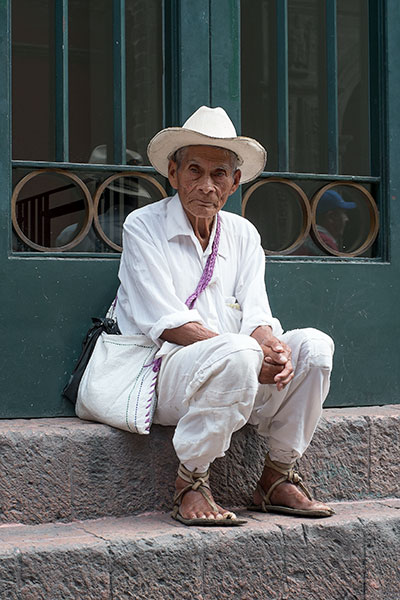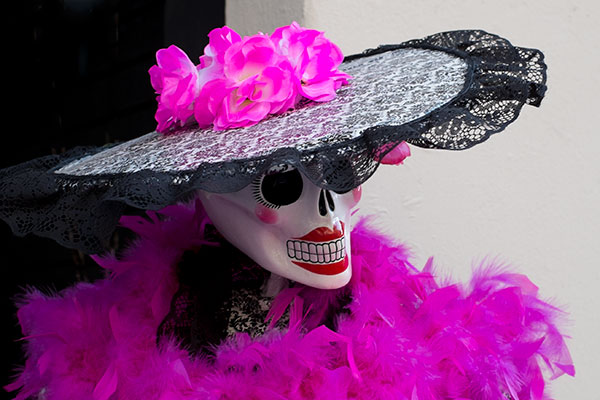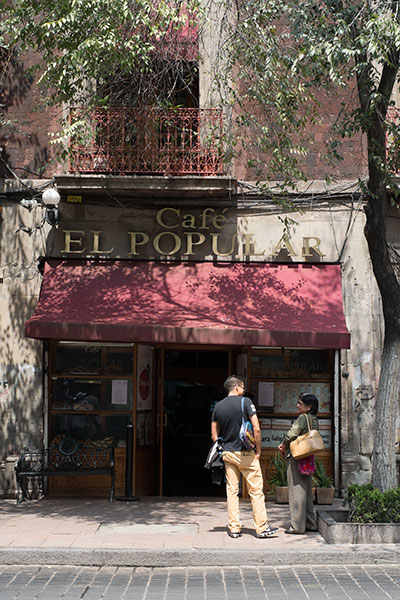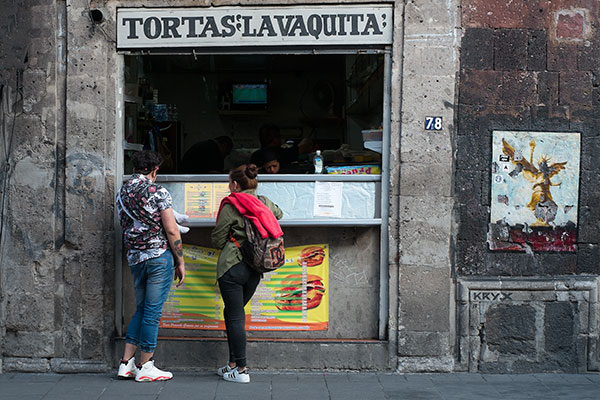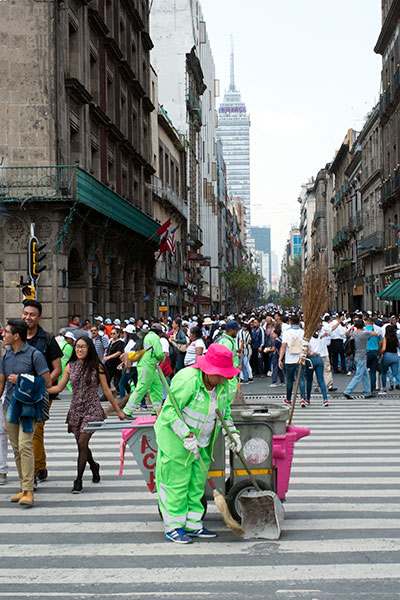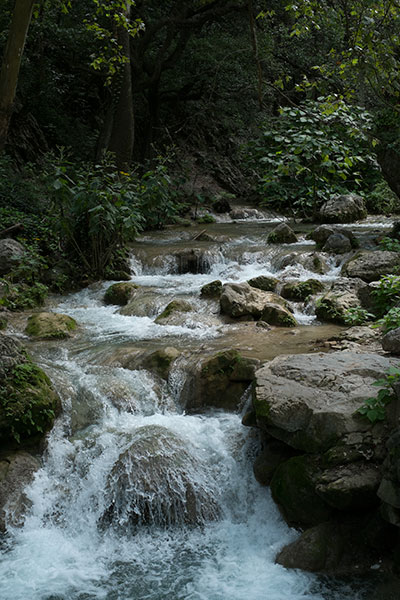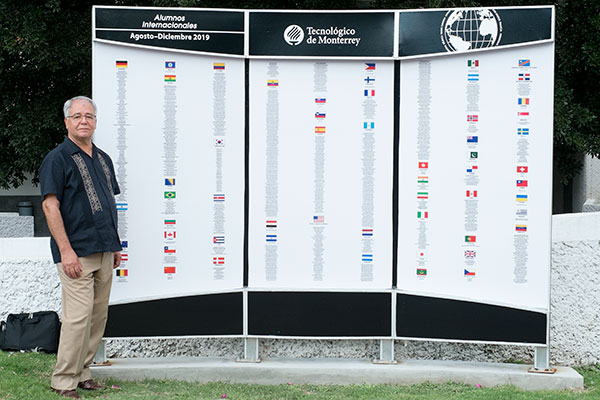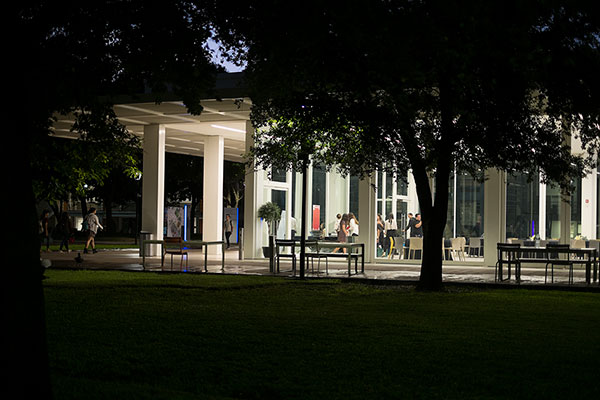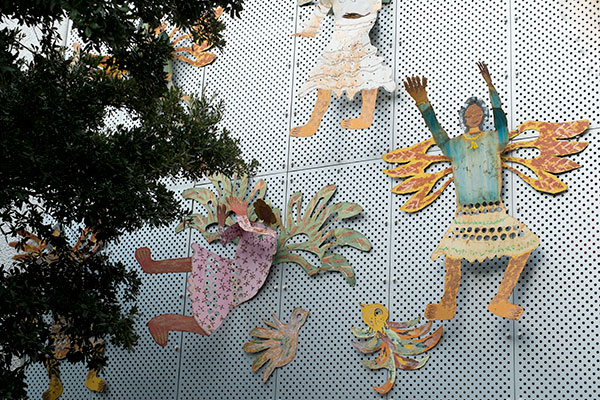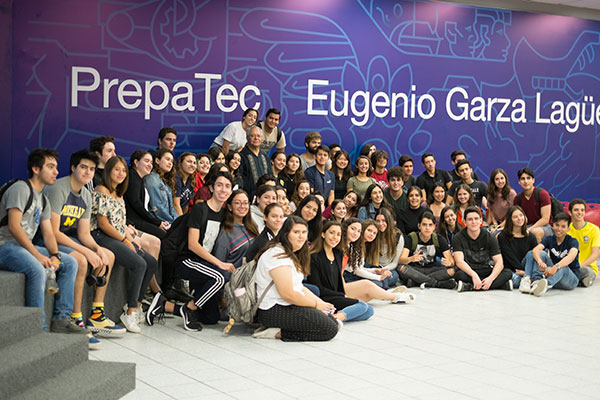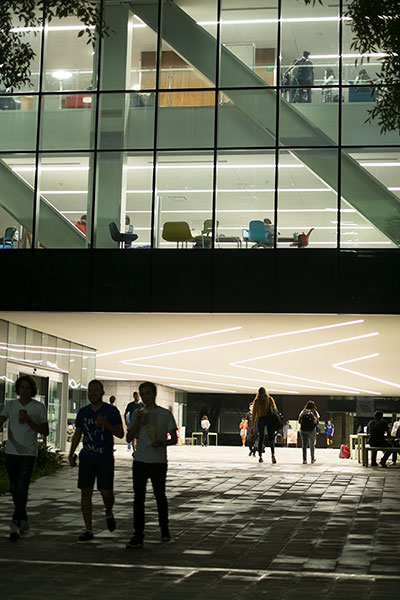A trip to Mexico gave me an opportunity to rediscover
the fascinating qualities of our southern neighbor.
mexico city: the historic center
In the historic center of Mexico City, you look up and see that you are surrounded by buildings that evoke another era. The city center is a popular place, and the old buildings are well preserved. The buildings, of course, remind you of Europe but the colors are Mexican. The city's government surely takes pride in the preservation of the city's architectural heritage. As you walk through the downtown streets admiring the beauty that is all around you, it is hard to believe that Mexico City is about the same distance from Oklahoma as New York City.

The windows of this old building are using old photographs to advertise the department store housed within . The caption reads, "scenes of modesty and frivolity", and these are just two of many on other windows. The pictures demonstrate a consciousness of the city's past, and the joy that the people take and remembering it.

The busy streets of the city empty as the heavy afternoon rains fall.

Street art, in the sense of graffiti, is rare to see in Mexico City, but Mexicans still treasure their art heritage. In this photo, a young man is decorating the temporary wall of a construction site. From the amount of care and attention going into the preparation of the artwork, it looks like the construction project is expected to last a while. In the meantime, people passing on the street will have the enjoyment of a large professionally painted traditional work of art.

The old buildings in the historic city center make an elegant setting for those sleeping on the street. Visible signs of poverty are few in the center of the city, but Mexico City is like most major cities in the world and the occasional homeless person can be seen.

In Mexico City, like other places in the world, church entrances are popular places for those seeking a handout. Churches in Mexico are still well frequented by the fateful.

Finding a person dressed in the classic style of the Mexican peon is rare to find in modern
Mexico City.

When I was in the city, we were just a month away from the celebration of the Día de los Muertos. It is a very pop-culture holiday in Mexico today, and decorations were to be found in all the stores. Many of the decorations were colorful and whimsical.

Even in the heart of Mexico City, trees are common. Streets can have a small town feel, as we see in this photograph outside a neighborhood restaurant. Despite being one of the largest cities in the world, Mexico City's historic city center offers relaxed spaces where people can stop and chat.

Snack stands in downtown Mexico City often draw long lines. This one is at an off hour in the day's business.

The monumental architecture of some of the older buildings from the 30s and 40s creates weekend points of refuge away from the pedestrian filled streets.

This photo was taken at the entrance of a street leading away from the Zocaló. The Zocaló of Mexico City is the nation's "City Square", and celebrations, entertainment festivals, political events, and national commemorations fill the giant space. needless to say, keeping the space clean requires a full-time staff. The tall glass and iron structure visible in the distance is the famous Torre Latino, once the tallest building in Latin America. The viewing deck on top of the Torre Latino is still one of the favorite tourist destinations in Mexico City.

The city's Zocaló is the favorite place in the whole country for holding rallies and demonstrations. Its large expanse accommodates huge crowds. Big events draw people from all over the country. This photo shows a group of indigenous people whose participation in an event demonstrates the national scope of the assembled group.

Horse Tail Falls, Nuevo León
The casual visitor to the north of Mexico around Monterrey typically sees only dry and arid countryside. A closer look provides a different perspective. Horse Tail Falls is a short drive from the industrial city of Monterrey, but for the American visitor it is like being in Colorado.

This mountain stream that visitors pass on the walk up to Horse Tail Falls could be in New England or the Rocky Mountains. For a visitor in Monterrey it is hard to imagine that such a place exists just a short drive away.

Monterrey: El Tec
The Instituto Tecnológico de Monterrey is one of the top universities in Latin America and it draws students from around the world. At the campus entrance is a sign showing the countries from which international students have come, and it lists each student by name. It is updated each semester. Standing next to the sign is my friend, Dr. Zidane Zeraoui of the school's Department of International Relations.

American universities would benefit from a careful study of the campus design of the Instiuto Tecnológico de Monterrey ("Tec de Monterrey"). It is a wonderful campus for walking. An integration of indoors and outdoors is seen in campus building designs.

Tec de Monterrey has some striking modern architecture, and much of the architecture and the campus includes artistic features. These whimsical mythological figures decorate the side of a classroom building.

Tec de Monterrey also sponsors a large college preparatory high school. Students are trained for admission to competitive universities like Tec de Monterrey.
While I was in Monterrey, I joined Prof. Zeraoui for a lecture that he gave in French to students at the high school. Following his talk, they posed for my camera.
(I'm not aware of any high school in the Tulsa area where it would be possible to gather such a large group of students for a lecture given entirely in French.)

This is an evening view of campus life that offers another perspective on how the campus integrates indoors and outdoors in a way that makes the entire campus space and exceptionally pleasant place to be.















